Oh boy, this is a long, photo intense one…. Prepare yourselves! Time for our next entry in The Bread & Soup Project!
So, what do we know about Burundi? Nothing. None of us know anything about it. Admit it. 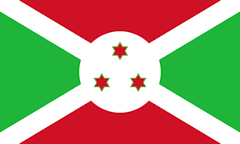 It’s a small, landlocked country in the middle of Africa, bordered by Rwanda, Tanzania, and the Democratic Republic of Congo. As a separately defined country it dates back to the 16th century. The majority of the population is Hutu (85%). The national language is Kirundi, with French and English being also recognized as official languages. It was a kingdom until the late 1800s, when it was colonized by Germany, and then Britain and Belgium attacked it and took it over during WW1. It remained a Belgian colony until the 1960s. It has a president, and two vice presidents, which if I understand it correctly, each is from one of the two major parties, so that there’s representation of both in the administration. An interesting idea, no? It has two separate capital cities – Bujumbura is the economic capital, and Gitega is its political capital.
It’s a small, landlocked country in the middle of Africa, bordered by Rwanda, Tanzania, and the Democratic Republic of Congo. As a separately defined country it dates back to the 16th century. The majority of the population is Hutu (85%). The national language is Kirundi, with French and English being also recognized as official languages. It was a kingdom until the late 1800s, when it was colonized by Germany, and then Britain and Belgium attacked it and took it over during WW1. It remained a Belgian colony until the 1960s. It has a president, and two vice presidents, which if I understand it correctly, each is from one of the two major parties, so that there’s representation of both in the administration. An interesting idea, no? It has two separate capital cities – Bujumbura is the economic capital, and Gitega is its political capital.
It is not, as a friend suggested last eve, the fake country from which Eddie Murphy came in Coming to America. That was Zamunda.
The food is a mix of indigenous cuisine, apparently these days heavily influenced by the Belgian years, particularly in the introduction of certain spices and many classic western European cooking techniques. And, away we go.
This one turned out to be relatively easy to pick a soup. Burundi has an officially declared “national soup”, Elephant Soup. Now, historically, this soup was indeed made with strips of dried elephant meat, but in modern society that’s been replaced (I would imagine not always, but at least in general, and for the majority populace) with a Burundian version of biltong, air dried meat of cow, ox, or water buffalo that mostly we associate with South African cuisine, though it’s found throughout southern and central Africa. Originally, I was trying to get some biltong from a South African guy who used to live here in BA, but moved to Uruguay, and makes it, but then the pandemic hit and that went out the window. So, hey, I’ve got time, why not make it myself? I could probably also have used beef jerky, which I could have probably found – different seasoning, but could have adjusted that by adding some spices to the soup.
First, a lovely filet of silverside, or bottom round, cut into pieces for curing. Now, as to the curing – there are more recipes for making biltong out there than there are people living in south and central Africa, so that was minimal help, other than narrowing things down, and I still had to basically just “give it a go”. Here I have black vinegar (Chinese, but seemed the closest to an African brown vinegar that I could find from descriptions), oyster sauce (more traditional would be worcestershire sauce, but bizarrely, it seems to have disappeared from local shelves), honey (most recipes call for brown sugar, but all the elephant soup recipes I found mentioned the meat was air-dried with honey), and, baking soda.
Mix the cure ingredients together, obviously the vinegar and baking soda will react and foam.
Wait for the foam to die down.
Dip the meat in and set aside to marinate for an hour and a half. Then dip it again, and leave the slices for another hour and half.
Coat lightly with coarse salt and “hang” for an hour and a half. Easiest thing for me with a small quantity was just putting them on a cooling rack over a bowl. Halfway through the time I flipped them over.
Coat with a mix of crushed white peppercorns and coriander seeds, and do the same – an hour and a half, flipping halfway through.
And, then I stuck it in the refrigerator overnight to sit. At some point I flipped them once again.
Next day, brush off some of the excess spices and salt, and it looks like this. It’s not completely dried out, obviously – the full on version dries to the texture of beef jerky over several weeks. But, it would be usable for soup at this point. Still, it was recommended to let it continue to dry for a few days at least. I put it back on the rack, and just flipped it once or twice a day, for a week. Not hard and chewy like jerky, but getting there….
Ready to make our Elephant Soup! You can see how much darker and drier the meat looks after a week. Mushrooms (no African black wumubu mushrooms around, I just used baby portobellos), par-cooked lentils, peanuts, onion, leek, cream, butter, and a mixed beef and chicken stock.
Dice up the meat.
Cover with the stock, bring to a simmer, and cook for an hour. With full on dried to jerky chewiness, it’s recommended an hour and a half, but I figured on less time given how much less dried this was. Probably could have gone half an hour and it would have been fine too.
Chop the vegetables.
Add to the pot. Bring back to a simmer, for an hour.
Add cream and butter and cook for about 5 more minutes to meld the flavors.
Our soup is done.
The bread came immediately down to two choices. There’s what is sort of referred to as the “king’s bread” – a special bread mostly used for holiday situations, it’s an aniseed bread. But it seemed to lean too heavy on both the aniseed and the sweetness side of things to go with this soup. The most ubiquitous bread in daily life in Burundi is the chapati. Immediately I think of the Indian subcontinent, and indeed, that’s its origin, but Indian settlement in eastern Africa in the 16th and 17th century apparently brought this bread to the area and it’s become a staple. I’ve never tried making chapati before, and it sounded pretty straightforward, albeit slightly involved.
I made a small batch of just two. The recipe I had made six, but we have enough bread around this house given all the bread baking we’re doing for customers. So, flour, salt, sugar, oil, water. nothing more. The full recipe calls for 375 gm of flour (roughly 3 cups), 1 teaspoon sugar, 1½ teaspoon salt, 3 tablespoons oil, and 300 ml water.
Mix together and knead for ten minutes into a smooth dough. Let sit for about twenty minutes under a towel to relax.
Divide in two (or six for the full recipe) and roll out very thin, about 12″/30cm across.
Brush lightly with more oil.
Dust with flour and press the flour into it – it’ll stick because of the oil.
Accordion fold it up.
Coil it and tuck the end underneath. Cover and let sit for twenty minutes.
Roll out into round about 6″/15cm across.
Oil the upper side.
Toss it on the grill. I think I probably should have used my flat griddle rather than the ridged grill. Next time. Once the bottom is nicely browned, oil the dry upper side and flip it over.
Cook until both sides are nicely browned and the dough doesn’t seem wet at all anymore.
And, serve it up with a bowl of the soup!
Yum all around. With surprisingly few ingredients, this is an absolutely delicious Elephant Soup. I think I’d have liked more “stuff” and less broth, but other than that, I loved the flavors, and the textures of the different vegetables, lentils, and peanuts (which get soft, like a slightly chewy bean), were great. I also don’t think there’s any real reason to parcook the lentils. I mean, they’re going to simmer in the soup for over an hour, they’ll cook, and retain more texture. The chapati was ideal for dipping into the soup. All around, a tasty entry in this project.
Assuming we’re staying on alphabetical track, next time, we head to Cambodia.
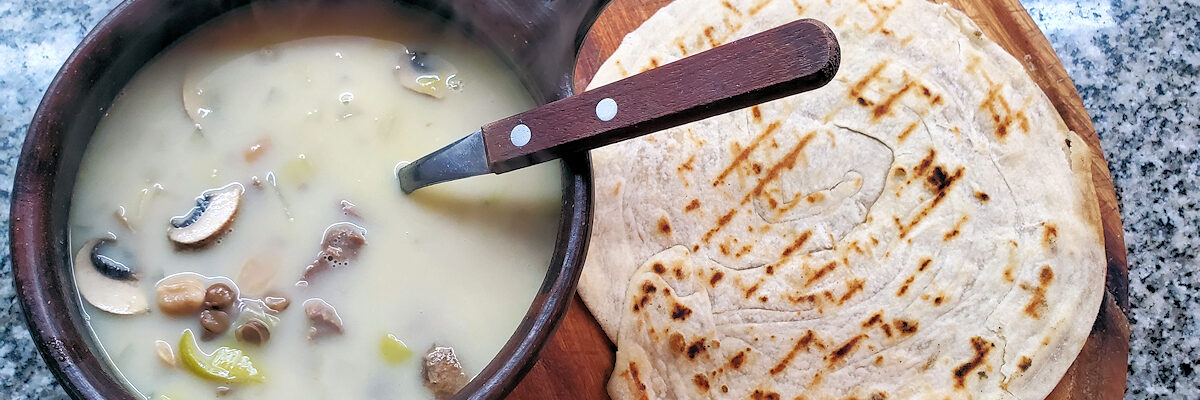
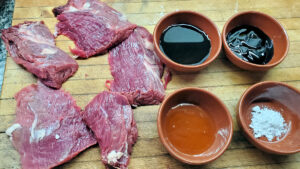
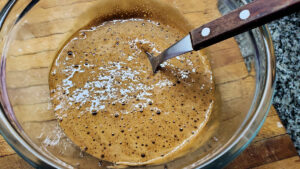
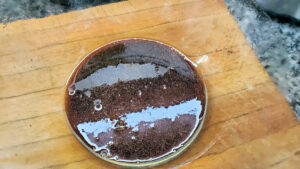
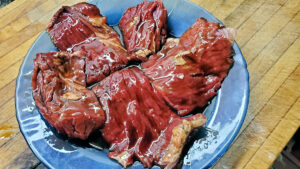
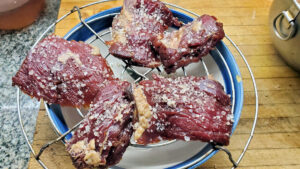
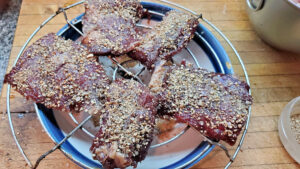
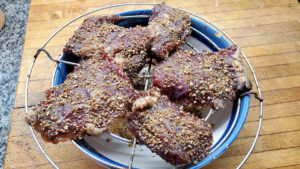
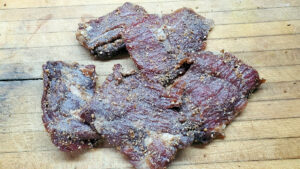
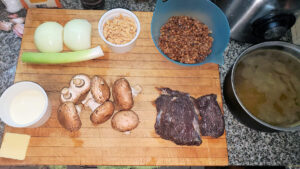
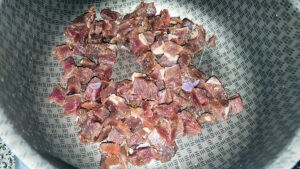
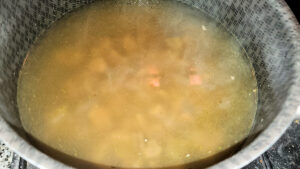
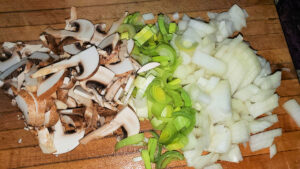
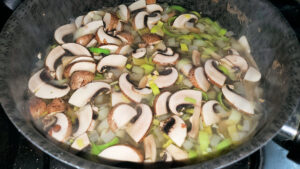
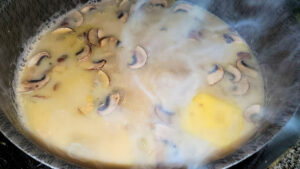
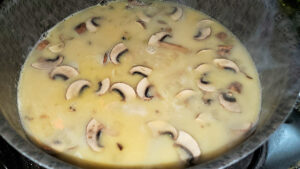
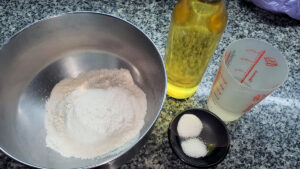
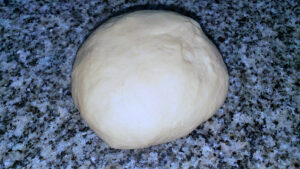
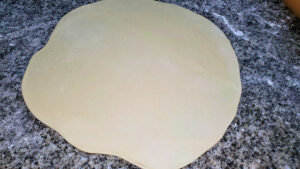
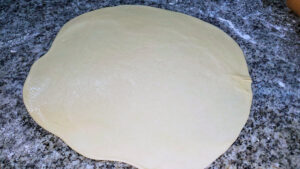
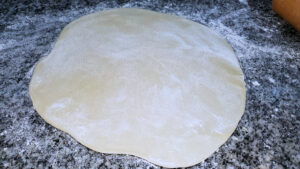
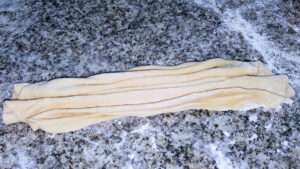
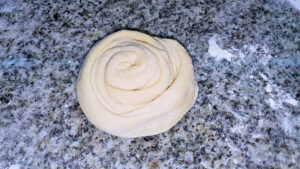
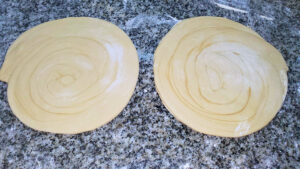
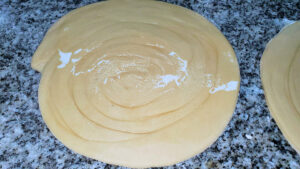
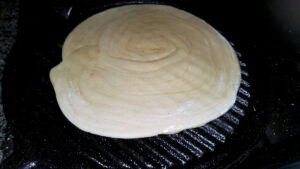
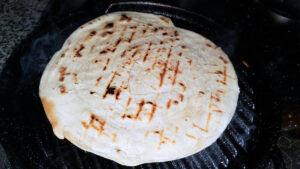
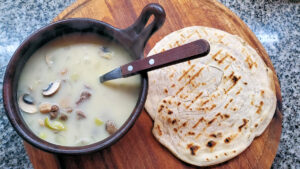
[…] I ended up returning to my alphabetical order, and back to the previously planned Burundi. […]
[…] new for me. Making a soup out of charqui, dried beef, while akin to the biltong soup I made for Burundi, is quite […]